Daddy’s Girl: Nancy Sinatra Revisited
 Because her biggest hit, “These Boots Are Made for Walkin’” was so huge, there is a tendency to overlook the rest of Nany Sinatra’s recording career. That’s a shame because she lent her voice to some very good pop records in the mid to late Sixties. Her partnership with producer-songwriter Lee Hazelwood also saw her blending rock with more country-influenced sounds long before the Eagles and others would explore the same territory in the Seventies.
Because her biggest hit, “These Boots Are Made for Walkin’” was so huge, there is a tendency to overlook the rest of Nany Sinatra’s recording career. That’s a shame because she lent her voice to some very good pop records in the mid to late Sixties. Her partnership with producer-songwriter Lee Hazelwood also saw her blending rock with more country-influenced sounds long before the Eagles and others would explore the same territory in the Seventies.
Nancy was the oldest of Frank’s daughters, born to his first wife (also named Nancy) in 1940. She made her singing debut in 1960 on a TV special that saw Frank teaming with Elvis Presley!
Naturally, she signed to Reprise Records, the label her father founded. Her first few recordings sold in Europe and Japan, but attracted zero interest in the States. What happened that changed her career?
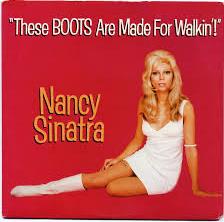
On the verge of being dropped by her record label. Nancy met Lee Hazelwood, a man previously best known for his collaborations with Duane Eddy. It was Hazelwood who changed Nancy’s image. He wrote and produced most of her hits. He had her sing in a lower key and wrote songs that he thought would fit her obviously sultry look. He also had her dye her hair blond and dressed her in then-current Carnaby Street fashions, making the girl he nicknamed “Nancy Nicelady” into a sex bomb.
As her career progressed, Hazelwood would often sing duets with Nancy. His rough, gravelly voice contrasting effectively with her more polished vocal style.
Nancy actually racked up a pretty impressive set of chart hits including:
- These Boots Are Made for Walkin’ (#1 – 1965)
- How Does That Grab You, Darlin’ (#7 – 1966)
- Friday’s Child (#36 – 1966)
- Sugar Town (#5 – 1966)
- Somethin’ Stupid (#1 – 1966, with Frank Sinatra)
- Love Eyes (#15 – 1966)
- Jackson (#14 - 1966, with Lee Hazelwood)
- Lightning’s Girl (#24 – 1967)
- Lady Bird (#20 – 1967, with Lee Hazelwood)
- Some Velvet Morning (#26 - 1967, with Lee Hazelwood)
In addition, Sinatra also sang one of the most haunting of all the themes for a James Bond film, “You Only Live Twice” and recorded a cover of Sonny & Cher's "Bang, Bang" that many consider to be superior to the original version.
 Her collaborations with Hazelwood on “Some Velvet Morning” as well as another single that just missed hitting the Top 40, “Summer Wine,” are credited with creating a style of music that has come to be known as “psychedelic cowboy” and both stand as two of the strangest little pop ditties to emerge from the Sixties. Her 1968 album, featuring 11 duets with Lee Hazelwood, Nancy and Lee, is considered one of the top 100 albums released during the Sixties.
Her collaborations with Hazelwood on “Some Velvet Morning” as well as another single that just missed hitting the Top 40, “Summer Wine,” are credited with creating a style of music that has come to be known as “psychedelic cowboy” and both stand as two of the strangest little pop ditties to emerge from the Sixties. Her 1968 album, featuring 11 duets with Lee Hazelwood, Nancy and Lee, is considered one of the top 100 albums released during the Sixties.
While the hits eventually dried up, Nancy Sinatra has continued recording and performing. At 55, she also became one of the oldest women to ever appear on the cover of Playboy (as well as posing in the all-together on the inside). She can also be frequently heard on the SiriusXM radio channel dedicated to her father.
And What Did Santa Bring You?

Have a Merry Bat-Christmas!
From Bat-Girl and all of us at Boomtown America!

The Stocking Were Hung...

May you find everything you want under YOUR Christmas tree this year!
What's With the Increase in Heartburn as We Age?
 You used to be able to wolf down hot wings and tequila after midnight. Now you even pass on a chili dog after 6 pm. Why?
You used to be able to wolf down hot wings and tequila after midnight. Now you even pass on a chili dog after 6 pm. Why?
Doctors say that over time the enzymes that aid digestion decease over time making it harder to break down food. In addition, taking anti-inflammatory drugs such as ibuprofen for joint pain. These substances made the stomach lining more sensitive.
To minimize the problem, experts recommend eating smaller portions and eating more slowly. (Also, try not to eat anything too late in the evening.)
Now, where did we put that habnero sauce?
Fun Facts About "Jingle Bell Rock"
 Love it or hate, you can’t escape it. Every year at Christmas time, you’re going to hear “Jingle Bell Rock” by Bobby Helms. It is unquestionably the most popular of all the rock-inspired holiday flavorings.
Love it or hate, you can’t escape it. Every year at Christmas time, you’re going to hear “Jingle Bell Rock” by Bobby Helms. It is unquestionably the most popular of all the rock-inspired holiday flavorings.
Here are some fun facts about this timeless little ditty:
The song was NOT written by Helms. It was actually composed by two marketing guys - Joseph Carleton Beal and James Ross Boothe. They were not young guys either. Beal was in his 50s and Boothe was 40.
Helms has recorded the song on multiple occasions. The original was released on Decca Records in 1957. But Bobby also re-recorded other versions for Kapp, Little Darlin’, Certron, Gusto, Ashley Records and Black Rose Records.
The song has hit the Billboard Hot 100 many times, the most recent was 2016 when it reached #26.
Despite its title, the song has actually been just as popular on country stations. In 1957, it actually received its first airplay on country stations before crossing over to the Top 40 stations. It has also hit the country charts with versions by George Strait, Aaron Tippin, Rascal Flatts, and Blake Shelton & Miranda Lambert.
The most successful cover by a rock artist was Hall & Oates whose version hit #30 in 2005.
We guess once the Jingle Hop had begun, it just never ended!

7 Facts You Never Knew About "White Christmas"
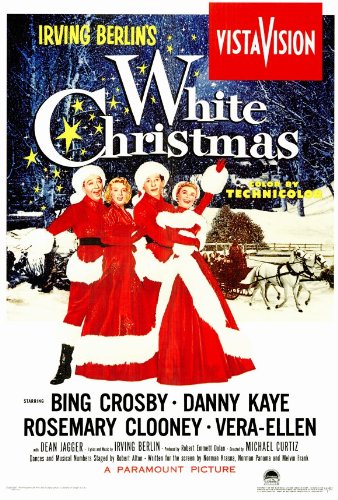 Before A Christmas Story, before the Grinch and Charlie Brown, most Baby Boomers’ holiday tradition was watching the movie White Christmas, the 1954 musical starring Bing Crosby, Danny Kaye, Rosemary Clooney and Vera Ellen. We saw it so often, we probably knew almost every line by heart.
Before A Christmas Story, before the Grinch and Charlie Brown, most Baby Boomers’ holiday tradition was watching the movie White Christmas, the 1954 musical starring Bing Crosby, Danny Kaye, Rosemary Clooney and Vera Ellen. We saw it so often, we probably knew almost every line by heart.
But here are a few things you probably didn’t know about the movie:
1. The Danny Kaye part was intended for Fred Astaire. The movie began as a quasi-remake of Holiday Inn, the black & white film that first teamed Bing Crosby and Astaire and the movie debut of the Irving Berlin song, “White Christmas.” But Astaire had announced his retirement (it wouldn’t stick) and turned the part down. It was then offered to Donald O’Connor, who accepted. Then he became ill and had to bow out. So, Kaye was the producers' third choice.
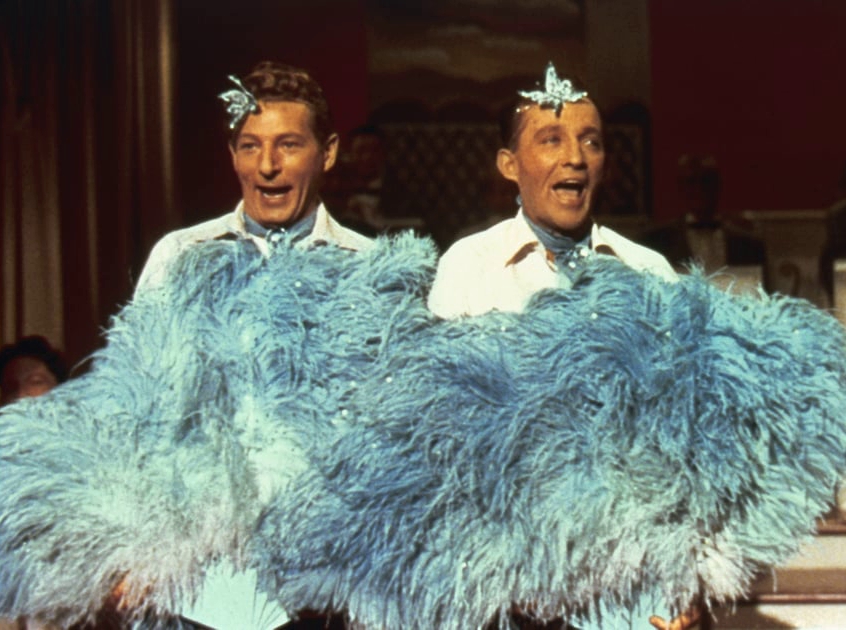
2. The musical number “Sisters” wasn’t in the original script. Crosby and Kaye were horsing around with the girls’ costume on the set. It cracked up director Michael Curtiz so much that he had the number worked up and included in the film.
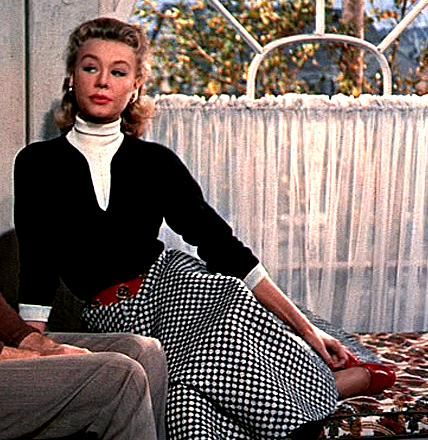
3. Try and see Vera Ellen’s neck. Throughout the film, Vera is always wearing a turtleneck, scarf or other covering around her neck. No one knows why. Some theorize that there was some flaw in her neck that she was covering up. Others think it was Vera Ellen’s attempt to create a trademark look for herself.
4. While Rosemary Clooney plays Vera Ellen’s older sister, she was actually 7 years younger than her co-star. Also, Bing Crosby was a bit older than Dean Jagger, who plays “the old general” in the film. By the way, Bing was nearly twice Clooney’s age (51 to her 26!).
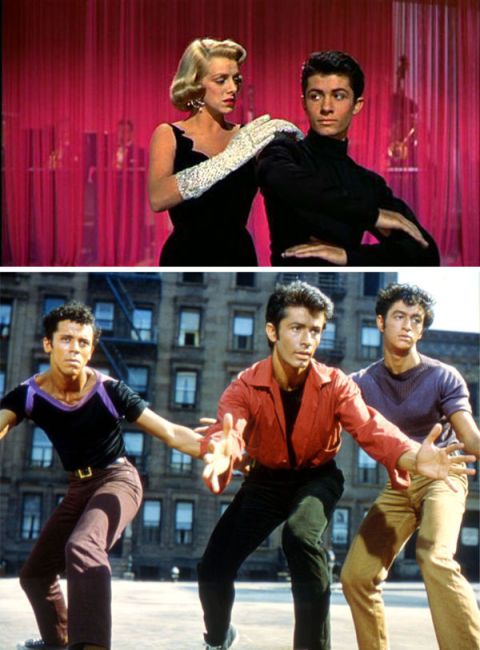
5. If you look closely, you’ll see future West Side Story star George Chakiris as a chorus boy in the production numbers.
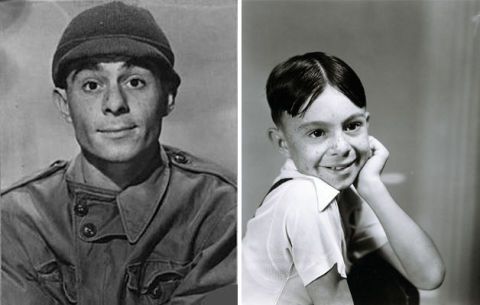
6. The photo of “Benny the Dog-Faced Boy” who was brother to Rosemary & Vera is a photo of a grown-up Alfalfa Switzer of Little Rascals fame.
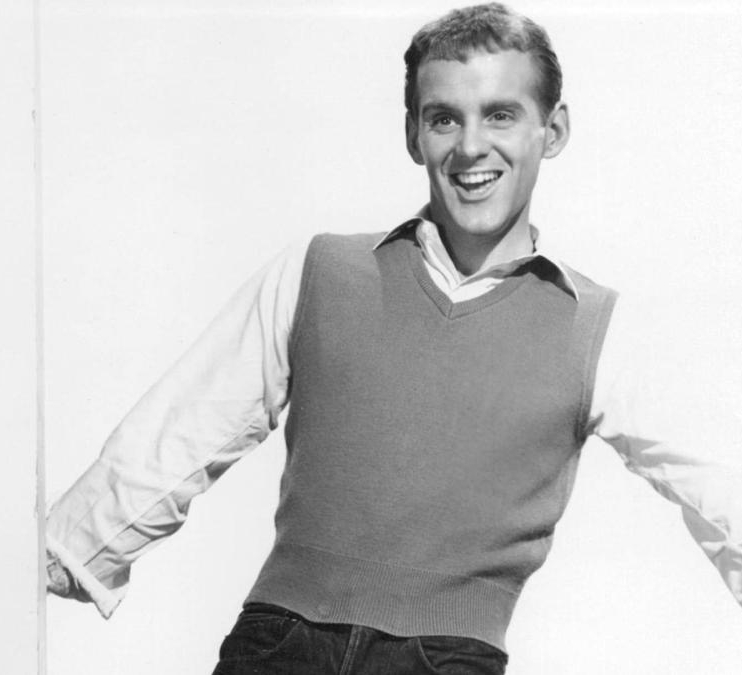
7. Bob Fosse worked on the film as an uncredited choreographer. It was early in the legendary dancer/choreographer/director’s career and Vera Ellen brought him on to choreograph her numbers, but without screen credit.
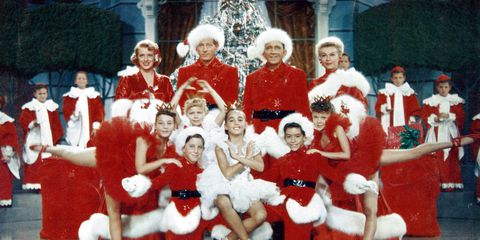
A Great Gift Idea!

I'm dreaming of a Creepy Crawly Christmas!
The Bombshell and the Virgin
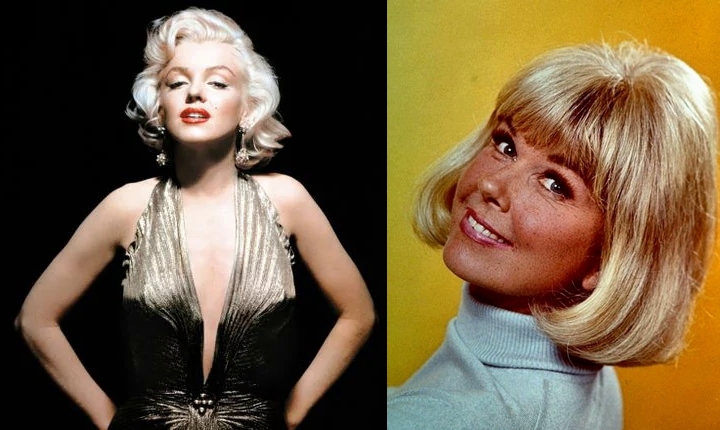 The two biggest box office attractions of the late 1950s and early 1960s had many similarities and two huge differences.
The two biggest box office attractions of the late 1950s and early 1960s had many similarities and two huge differences.
Both were blondes.
Both were very attractive.
Both changed their names when they got into show business.
Both worked primarily in hugely successful comedies, but were also effective in straight dramas.
The differences – one embraced an openly sexual persona, the other played the perpetual uptight virgin. One self-destructed by 1962, the other was with us until 2019.
We’re talking, of course, about Marilyn Monroe and Doris Day.

Doris Day was born Doris Mary Kappelhoff. She wanted to be a dancer, but a car accident in 1937 ended that dream, so she switched to becoming a singer.
Her success in that career, combined with her good looks, landed her a film contract at Warner Brothers where she was put to work in low-budget comedies and musicals, often teamed with comic Jack Carson. The films made money and she moved up the chain, finally breaking through to A-pictures in the early 1950s.
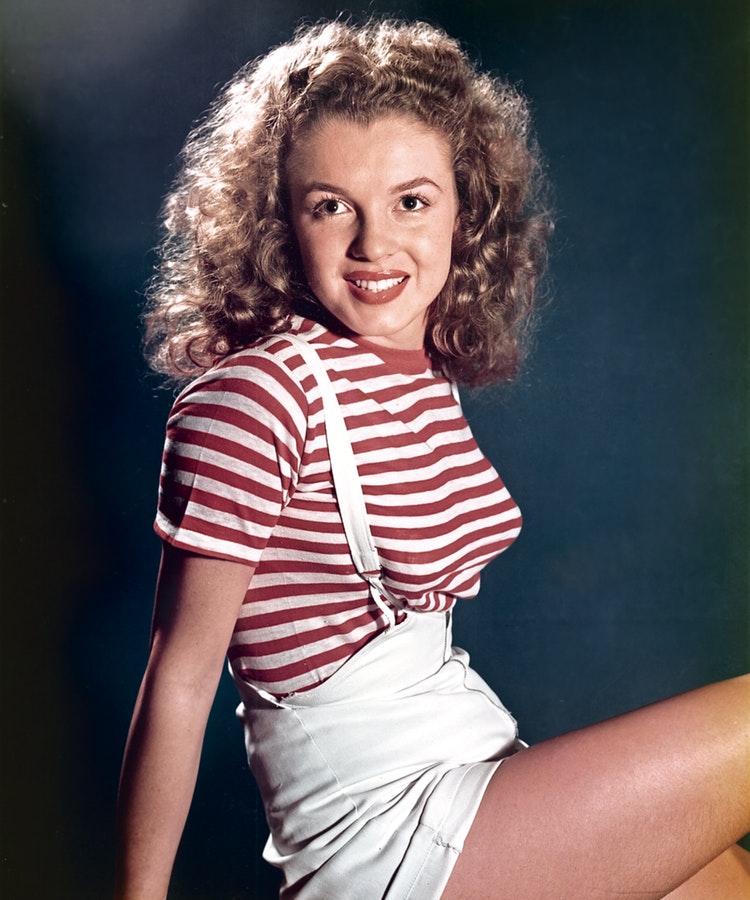 As most of us know, Marilyn was born Norma Jean Mortenson. After a very dysfunctional childhood that saw her shuttled in and out of foster homes and orphanages while her unmarried mother was in and out of mental institutions, Monroe got into the movies by way of modeling. She started out with bit parts in movies like All About Eve and the Marx Brothers’ final film, Love Happy. Larger parts followed until she, too, made the transition to starring roles.
As most of us know, Marilyn was born Norma Jean Mortenson. After a very dysfunctional childhood that saw her shuttled in and out of foster homes and orphanages while her unmarried mother was in and out of mental institutions, Monroe got into the movies by way of modeling. She started out with bit parts in movies like All About Eve and the Marx Brothers’ final film, Love Happy. Larger parts followed until she, too, made the transition to starring roles.
While initially untrained in acting, both Day and Monroe were natural talents who competed for the title of #1 Box Office Attraction as the 1950s progressed. But Monroe was stuck endlessly repeating variations of the “dumb blonde” character, while Day most often played smart career women or dedicated, spunky housewives.
Yet behind the cameras, it was Monroe who was more of a female business pioneer. Unsatisfied with both the roles and the salary her studio was offering her, she started her own production company in 1955 and stunned critics with her sensitive performance in Bus Stop. She won pay raises and more control over what roles she would play. But her personal problems eventually overcame Marilyn and she died of a drug overdose in 1962.
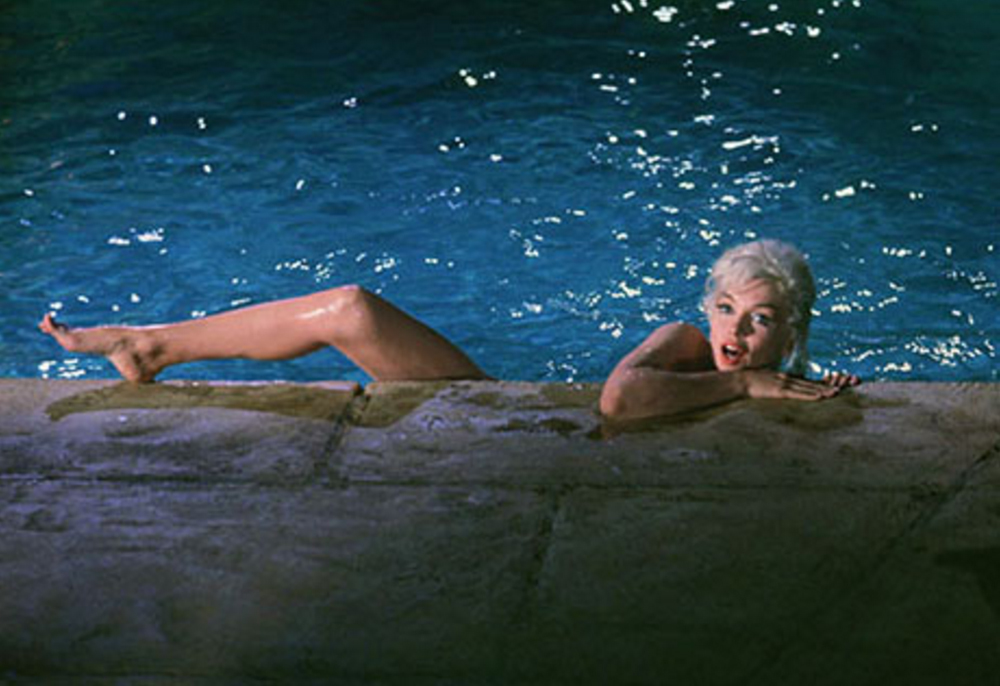 Ironically, the film Monroe was working on when she died, Something’s Got to Give, continued after her death with a new title, Move Over Darling, and a new star in her role – Doris Day!
Ironically, the film Monroe was working on when she died, Something’s Got to Give, continued after her death with a new title, Move Over Darling, and a new star in her role – Doris Day!
It is worth considering that these two women were indisputably the biggest female movie stars of that era. Yet one was portrayed as the dangerous bad girl and the other perceived as the prudish good girl. (Ironically, Day’s real love life was almost the polar opposite of her on-screen image. At one point, she was alleged to be having relations with at least four men on a regular basis and was also involved with husbands and boyfriends who physically abused her.)
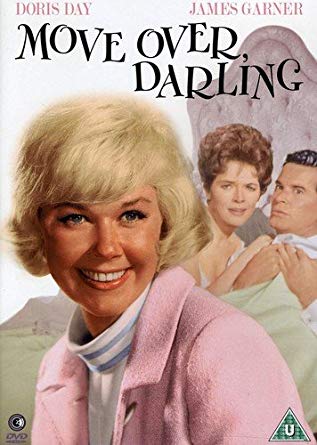 While Marilyn self-destructed, Doris was a survivor. When her film career petered out, Day transitioned to television and starred in a long-running sitcom that left her financially independent. While she retired from on-camera work, she continued to record, releasing her most recent album (her 29th) in 2011.
While Marilyn self-destructed, Doris was a survivor. When her film career petered out, Day transitioned to television and starred in a long-running sitcom that left her financially independent. While she retired from on-camera work, she continued to record, releasing her most recent album (her 29th) in 2011.
Both women represent a certain segment of America as we transitioned from the end of World War II into “the Swinging Sixties” and their film work should continue to entertain movie fans for many generations to come.
Before You Take a Bite Out of Bitcoin…
 Thinking of investing in bitcoin? You might want to think again.
Thinking of investing in bitcoin? You might want to think again.
The first rule of investing is – don’t invest in something you don’t understand.
Bitcoin is a bunch of computer code that its backers insist is worth “real money.” Yet, the currency is literally backed by nothing at all. There is no government nor really any financial institution that stands behind this “currency.” Yes, there a bunch of speculators, idealists and, frankly, criminals who insist it is a valid currency. Yet, its value against the world’s hard currencies swings wildly (which simply reflects demand for bitcoin). Finally, do you know any place you can exchange your bitcoin holdings for a loaf of bread, college tuition or a new car?
If some “financial advisor” starts talking about bitcoin being based on “blockchain” technology – this is also just computer code. It's not magical.
Remember, if you don’t understand it, it's probably not smart to put your money there. Just ask the people who didn’t really know how the internet functioned back in the 1990s and dumped their savings into dot-coms that went bust.
Pop Up Player
Latest Posts–Fads & Fashion
-
ROCK REMEMBERED
We're all about the history of rock & roll at BoomtownAmerica.com! Every Wednesday, we present “ROCK REMEMBERED,” where we take a deep dive into the hidden history of rock & roll, the stories behind the artists…
-
Anybody Camping This Summer?
-
Take the Quiz & See
Get on the beam, teen!
-
Is There a Pattern to This?
Back in the day, making your own clothes was "Simplicity" in itself!
-
Truth, Justice... And the American Way!
A thought for Memorial Day: Anybody but us remember when THIS was "the American Way?"
-
Our Forgotten Cartoon-Americans!
If you were a Baby Boomer who got up at the crack of dawn on Saturday mornings, poured yourself a big bowl of Sugar Smacks, and plopped yourself down in front of the family TV,…


